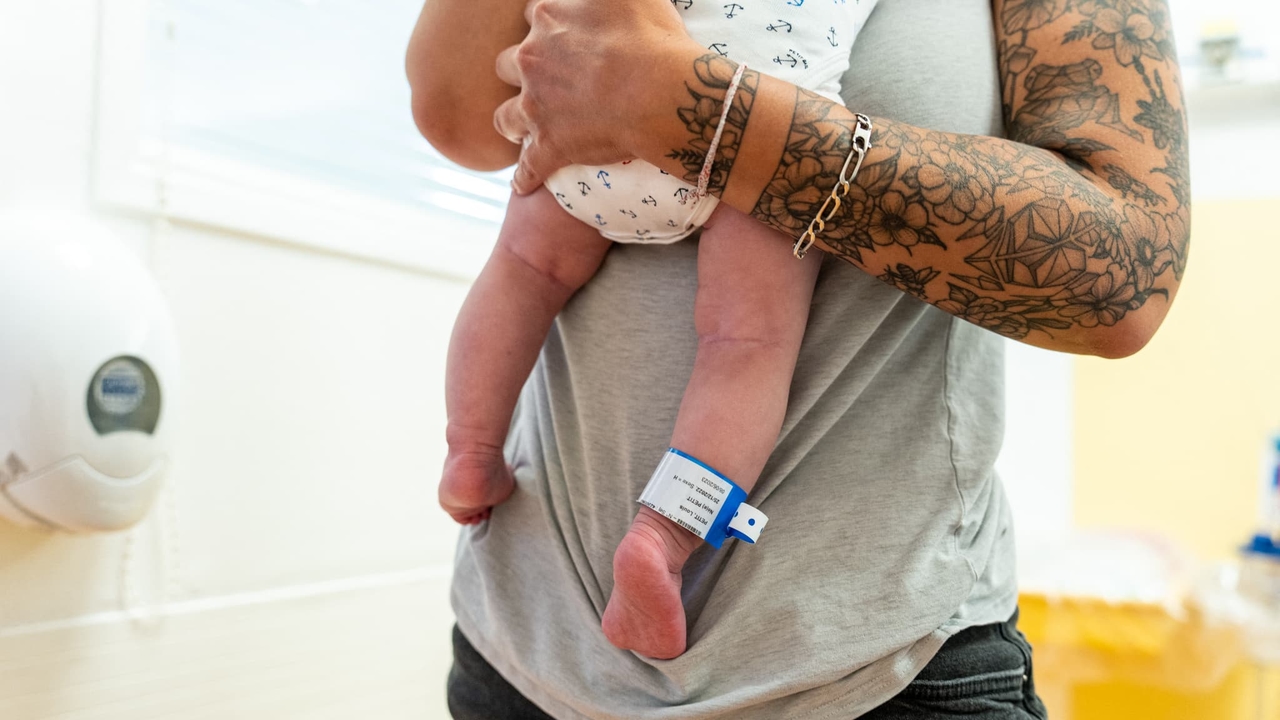Bronchiolitis: treatments, symptoms... Everything you need to know about the illness that affects babies

It's official: the annual bronchiolitis epidemic has begun for the 2025-2026 season. Public Health France announced in its bulletin this Wednesday, October 29, that the Paris region was the first to be affected by this disease, which particularly affects babies .
During the week ending October 26, "syndromic indicators related to bronchiolitis were increasing in the city and in the hospital, to levels close to the previous season at the same time," summarizes Public Health France (SPF) in a weekly review of the main respiratory diseases of autumn-winter.
The Île-de-France region has now entered the epidemic phase. As every year, the other metropolitan regions are expected to be affected by the epidemic in the more or less long term, starting with Normandy, which remains in the "pre-epidemic" phase for the third consecutive week.
According to the French National Health Insurance website , bronchiolitis is an acute viral respiratory infection affecting the bronchioles (small airways). It is primarily caused by the respiratory syncytial virus (RSV), which is seasonal. The virus causes inflammation of these bronchioles and "an increase in secretions leading to an obstruction."
As the Ministry of Health explains, adults and older children who carry RSV often show no symptoms , or only a mild cold. However, the illness can be more serious in young children. The most common symptoms are a stuffy or runny nose and a slight cough, which then becomes more frequent and may be accompanied by wheezing. The child may have difficulty breathing, trouble eating and sleeping, and may develop a fever.

In general, the symptoms subside quickly and the child recovers in 8 to 10 days, but a residual cough may persist for about two weeks before disappearing, according to the Health Insurance.
Babies under two months old and very fragile infants (born prematurely or suffering from a chronic illness) are particularly vulnerable to the complications that bronchiolitis can cause. "In rare cases, bronchiolitis requires hospitalization, or even admission to intensive care," according to the Public Health France website . This public agency, which reports to the Ministry of Health, specifies that "deaths attributable to acute bronchiolitis are very rare (less than 1%)."
To prevent it, as the disease is highly contagious, authorities recommend several hygiene measures for those around infants. These include: washing hands regularly, avoiding taking them to enclosed public spaces where they could come into contact with people who have colds, not sharing bottles, unwashed utensils, or pacifiers, airing the room for at least 10 minutes a day, and regularly cleaning their toys.
This illness requires a consultation with your doctor. However, there is no specific antiviral treatment. Therefore, to protect children, the authorities recommend two preventative treatments, covered by health insurance, offered either to pregnant women (Abrysvo) or to infants ( Beyfortus ).
This medication is administered once by injection. "It protects newborns and infants within a few days after the injection and for at least 5 months," according to the French National Health Insurance .
Each year in France, 30% of infants under two years old are affected by bronchiolitis, representing approximately 480,000 cases annually, according to health authorities . Among babies under one year old, 2 to 3% are hospitalized each year for severe bronchiolitis.
Bronchiolitis remains one of the leading causes of hospitalization for infants under one year old. However, the advent of preventive treatments has helped to change this situation in recent years.
For the 2024-2025 season in France, the bronchiolitis epidemic, from mid-November to mid-January, was "shorter in duration (8 weeks) and of lower intensity than previous epidemics, before the implementation of immunization of children and maternal vaccination, particularly in infants under 3 months", notes the Ministry of Health .
BFM TV





